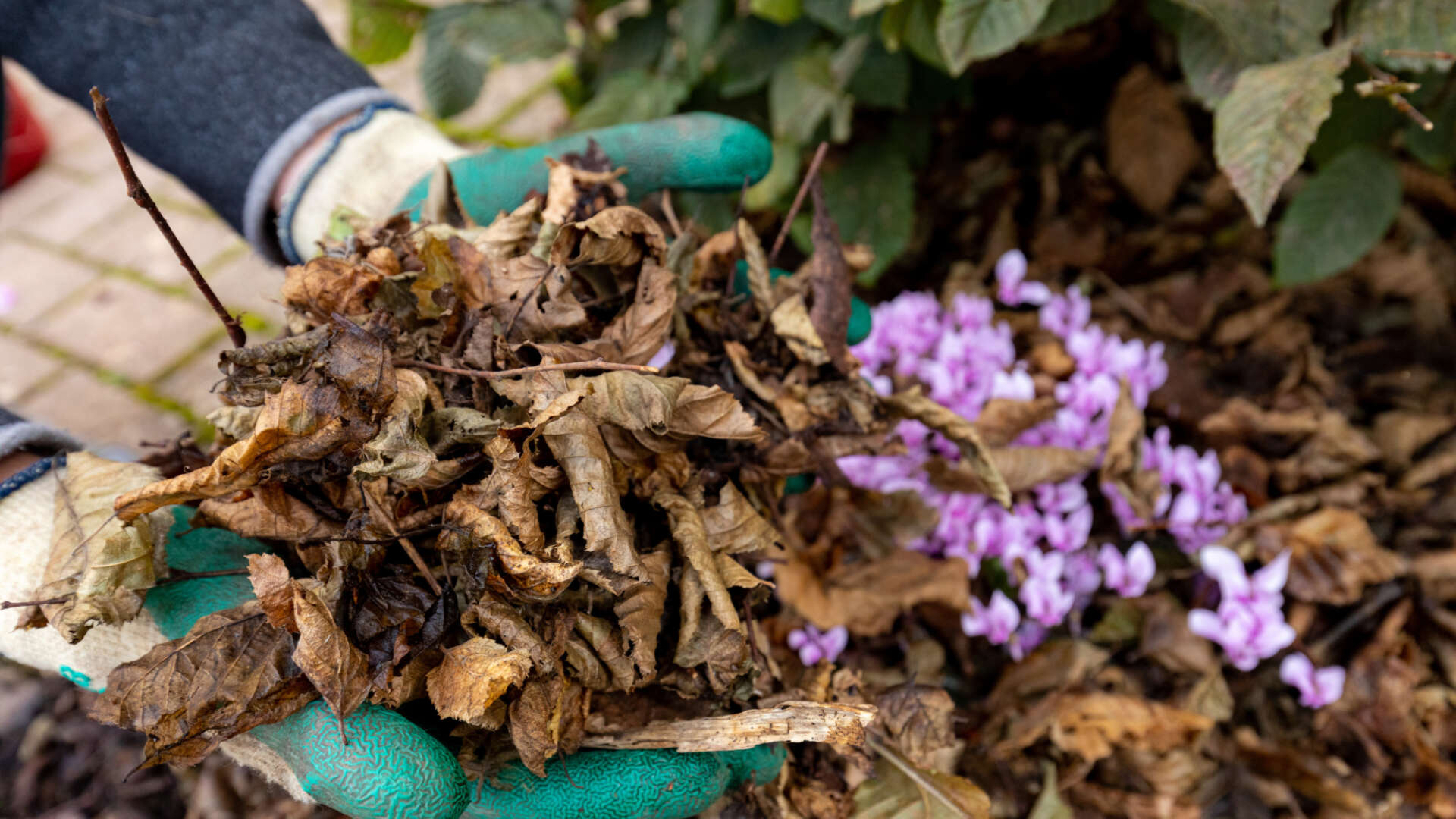Composting
Leafmould

Leafmould is so easy to make, as easy as 1,2,3
- Collect fallen autumn leaves.
- Pack them while damp into a container – a reusable bin bag or a wireframe.
- Leave them for a year or two. You will have a lovely dark brown mix that supports your soil structure.
Leafmould is one of the best ways to mulch a soil. Mulching protects bare soil during winter rains. And during summer months it will smother weeds and keep the soil moist. You can also use leafmould as part of your homemade potting mix for seedlings. Find out more about how to make it below, and - for the gardening geek - the science of leafmould.
How to collect and store leaves
You can use all fallen leaves in the autumn. Even the ones with black spots. Running the mower over the lawn, with blades high, will shred the leaves and collect them in a mix of grass trimmings. These will rot down fast, especially when damp.
Our advice is not to use evergreen leaves - such as holly, laurel or conifers - as they can take up to 3 years to rot down. Although pine needles can be gathered. Yes, they will take a long time to rot down, so keep them in a separate pile. But they produce acidic leafmould, which is ideal for mulching ericaceous plants, such as rhododendrons, azaleas, camellias, Pieris and blueberries. See below for the different types of leaves and their nutrients.
You can collect leaves from parks or cemeteries – but you may find the sturdy stalks of horse chestnut leaves take longer to break down. See The Science of Leafmould below.
Don't take leaves from woodlands. They are an important part of the natural cycle, providing nutrition as well as habitat for woodland creatures. It's also important to leave them under hedges. Not only are they good for the soil which feeds the hedge, but hedgehogs may be hibernating there.
What container?
Thick reusable bin bags or hessian sacks are ideal, especially if you reuse old builders' material bags. They are portable, allowing you to store them out of the way. Once full of leaves, make sure they are damp before tying the top. Pierce the bag a few times to help aerate the contents.
If you don't want to use plastic, try making a simple heap contained by the twinings of clematis or recently pulled up runner bean stalks. You can also build a frame of chicken wire, held up by posts.
How to use leafmould
Young leafmould (1 or 2 years old)
This is when leaves begin to break up and it's easily crumbled in the hand. Use it to
Winter cover for bare soil. It will protect against winter rains which can wash out the soil nutrients. It also provides excellent food for worms and other micro soil life.
A summer mulch around shrubs, herbaceous, trees, vegetables to suppress weeds and keep the soil moist.
Dig in as soil improver for sowing and planting, especially if your soil is heavy, it will help with drainage
Autumn top dressing for lawns. This will keep the soil micro life under the grass well fed. They in turn will help create a healthy well-drained soil for the grass roots to thrive.
Well-rotted leafmould (At least 2 years old)
This is dark brown crumbly material, with no real trace of original leaves visible. Use it to add to
A seed sowing mix - either well-seived leafmould on its own, or mixed with equal parts sharp sand. This makes the perfect low nutrient, fine-structured medium to help seed germination.
A homemade potting compost - mix equal parts well-rotted leafmould, sharp sand, loam (soil) and garden compost to give your potted plants a healthy well-structured mix to grow in.
The science of leafmould
Autumn leaves are rotted down mainly by the slow, cool action of fungi - rather than the quicker acting bacteria that work in a compost heap. This is why autumn leaves in quantity are best recycled separately in a leafmould heap. They won't hinder the speedy anaerobic breakdown of your homemade compost.
Leaves contain up to 80% of the nutrients picked up by a tree. However, as they die, most of these nutrients are reabsorbed by the tree. What remains in the leaf is an important substance called lignin. It acts as a buffer for extremes of mineral flows within the soil, and can hold the soil nutrients in reserve. Lignin is also the fibre in the leaf's cell structure, and is slow to break down. This means some leaves - which are higher in lignin - are slower to rot than others.
Leaves which are higher in lignin and lower in nitrogen and calcium: beech, birch, hornbeam, oak, sweet chestnut and magnolia
Leaves which are lower in lignin and higher in calcium and nitrogen: ash, cherry, elm, linden, maple, poplar and willow.
If you mix grass cuttings with the leaves you will increase the nitrate content of the leafmould.
Join Garden Organic!
By becoming a Garden Organic member you can join thousands of people who are already leading the movement for an organic and sustainable future for us all. And get great member benefits!
Join today